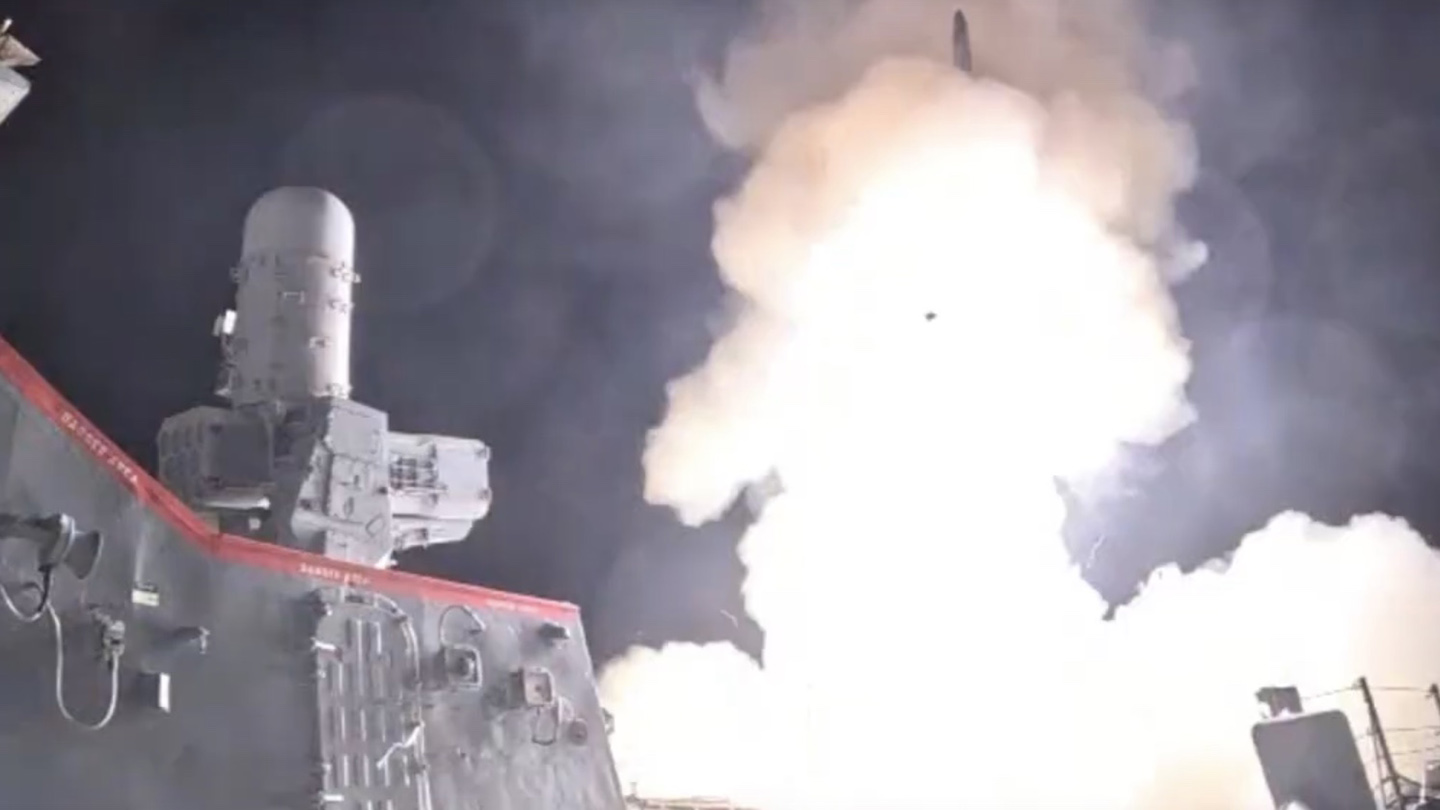“Multiple” Iranian missiles heading toward Israel on Tuesday were “successfully engaged” by two U.S. Navy destroyers, a Navy spokesman said in a statement Wednesday morning.
U.S. Sixth Fleet Arleigh Burke class guided missile destroyers USS Cole (DDG 67) and USS Bulkeley (DDG 84) “engaged multiple Iranian ballistic missiles in defense of Israel from the Eastern Mediterranean Sea October 1, 2024,” Navy Capt. Bill Urban, lead spokesman for U.S. Naval Forces Europe/Africa said in a statement Wednesday morning. “Multiple missiles are believed to have been successfully engaged at this time.”
Both destroyers have “the Aegis weapons system designed for ballistic missile defense and were stationed in the Eastern Mediterranean by the United States in advance of the Iranian launch as a part of U.S. Naval Forces Europe/Africa,” Urban added.
The Navy released two videos showing interceptors being launched from the Bulkeley. The statement did not say what kind of interceptors or how many missiles were engaged.


As we reported yesterday, about a dozen interceptors were launched against the Iranian missiles according to Air Force Gen. Pat Ryder, the Pentagon’s top spokesman. He declined to confirm if they were Standard Missile-3 (SM-3) anti-ballistic missile interceptors. We reached out to the Navy for more details about the kind of interceptors launched and how many Iranian missiles were destroyed as a result.
While it is possible the destroyers fired multi-purpose SM-6 missiles to engage the targets, that seems unlikely given where the Iranian missiles landed. SM-3s are used for midcourse engagements, while the targeted missile is flying outside the earth’s atmosphere. SM-6s are used for more localized defense as the weapon is careening down toward the atmosphere during its terminal phase of flight.

SM-3s were used in combat for the first time back in April during the first Iranian barrage against Israel. As we previously reported, they performed well enough that Navy Secretary Carlos Del Toro said his service wants more even though the Pentagon’s Missle Defense Agency (MDA) wants to end procurement of SM-3 Block IB variants by the end of this year and limit its buy of the follow-on Block IIAs to 12 per year through Fiscal Year 2029.

On Wednesday, the Chief of Staff of the Israeli Armed Forces said that about 200 Iranian missiles were launched against Israel but caused “relatively minor” damage.
“Iran attacked civilian areas and endangered the lives of many citizens,” said Lt. Gen. Herzi Halevi. “Thanks to proper civilian behavior and high-quality defenses, the damage was relatively minor. We will respond, we know how to locate important targets, we know how to strike with precision and power.”
Still, there were a number of targets hit, including the Tel Nof Air Base south of Tel Aviv, home to Israeli fighter aircraft, including F-15C/Ds, known locally as Baz. You can see video of that strike below.
Despite the strikes, operations at the base are ongoing, Halevi said.
“I visited Tel Nof Airbase before the holiday began,” he explained. “The base is fully operational, it has not ceased to operate for a moment, and continues to carry out strikes wherever required. We have the capabilities to reach and strike any point in the Middle East. And those of our enemies who have not yet understood this, will soon understand.”
U.S. officials have been working behind the scenes to get Israel to temper its response to the latest Iranian barrage. Given comments from top leaders there like Halevi however, it seems that Israel is considering a large-scale retaliation. We should know more in the coming hours as Israel celebrates Rosh Hashona, the start of the high holy days.
Contact the author: howard@thewarzone.com
